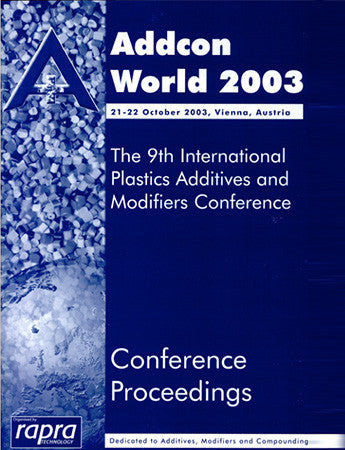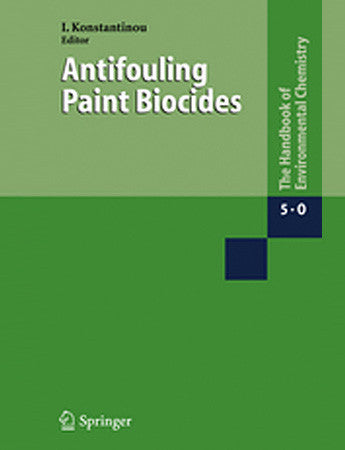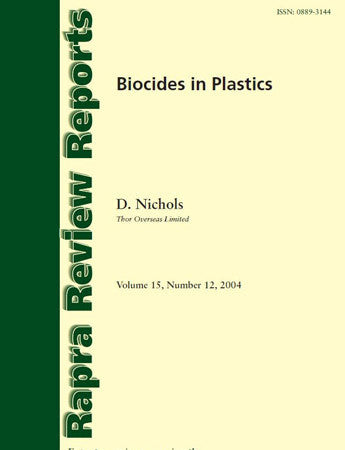Plasticizer Database V.3 is a new edition of database last published in 2004. The new edition has the same structure as the previous database but it is completely updated to the present status of plasticizer production. Since 2004, substantial changes occurred in plasticizer market, caused by health and environmental concerns, which were followed by appropriate regulations. These new regulations and new product developments caused changes in plasticizer production and applications.
Since 2004, 498 plasticizers included in the previous edition of Plasticizer Database were discontinued. Over 200 new plasticizers were added. Also, a number of major plasticizer manufacturers changed from 98 to 85, which shows consolidation of plasticizer production and offering.
All these changes are clearly reflected in the new edition of Plasticizer Database, which is required by both new readers and owners of the previous edition of the database. Plasticizer Database V.3 is the largest database on plasticizers ever published. The information about its contents is given below.
The plasticizer database was developed to contain data required in plasticizers application. Attempts were made to include a large number of plasticizers used in various sectors of industry to provide information for all users and to help in finding new solutions and formulations. Plasticizers included in the database can be divided into two categories: generic chemical name compounds and commercial plasticizers which are either mixture of several components, industrial grades of the particular compound, polymeric materials, or products having unknown, complex composition. In most cases, plasticizers differ from solvents by boiling point, which is above 250oC, but some plasticizers are used as temporary plasticizers or are expected to react with other components of the mixture. These substances will not meet the boiling temperature criterion but will still be included since they play the role of plasticizers. A large number of the plasticizers and the data fields makes this database the most comprehensive database on plasticizers ever available in any source.
The plasticizer database is divided into five general sections: General information, Physical properties, Health & safety, Ecological properties, and Use & performance. Information on the selected plasticizer can be accessed by clicking on any of the above tabs. The database has a large number of data fields to accommodate a variety of data available in source publications. The description of general sections below gives more detail on the composition of information. The displayed information contains plasticizer name and its chemical structure. The data can be viewed on screen and printed in a predefined format.
In General Information section the following data are displayed: name, CAS #, IUPAC name, Common name, Common synonyms, Acronym, Empirical Formula, Molecular mass, RTECS Number, Chemical Category, Mixture, EC number, Ester Content, Phosphorus Content, Bromine Content, Solids Content, Oxirane Oxygen Content, Paraffinic Content, Naphthenic Content, Moisture Content, Chlorine Content, Bound Acrylonitrile, Sulfur Content, Butadiene Content, Aromatic Carbon, Total Aromatic Content, and Hydroxyl Number.
Physical Properties section contains data on State, Odor, Color (Gardner, Saybolt, and Platinum-cobalt scales), Boiling point, Melting point, Freezing point, Pour point, Iodine Value, Refractive indices at different temperatures, Specific gravity at different temperatures, Density at different temperatures, Vapor pressure at different temperatures, Coefficients of Antoine equation, Temperature range of accuracy of Antoine equation, Vapor Density, Volume Resistivity, Acid number, Acidity(acetic acid), Saponification value, pH, Viscosity at different temperatures, Kinematic viscosity at different temperatures, Absolute viscosity at 25C, Surface tension at different temperatures, Solubility in water, and Water solubility.
Health & Safety data section contains data on NFPA Classification, Canadian WHMIS Classification, HMIS Personal Protection, OSHA Hazard Class, UN Risk Phrases, US Safety Phrases, UN/NA Class, DOT Class, ADR/RIC Class, ICAO/IATA Class, IMDG Class, Food Approval(s), Autoignition Temperature, Flash Point, Flash Point Method, Explosive LEL, Explosive UEL, TLV - TWA 8h (ACGIH, NIOSH, OSHA), Max Exposure Concentration NIOSH-IDLH, Toxicological Information, acute, Rat oral LD50, Mouse oral LD50, Rabbit dermal LD50, Dermal LD50 (guinea pig), LD50 dermal rat, Inhalation, LC50, (rat, mouse, 4h (mist)), Skin irritation, Eye irritation (human), Carcinogenicity, Teratogenicity, and Mutagenicity.
Ecological Properties section includes Biological Oxygen Demand, Chemical Oxygen Demand, Theoretical Oxygen Demand, Biodegradation probability, Aquatic toxicity LC50 (Rainbow trout, Bluegill sunfish, Sheepshead minnow, Fathead minnow, and Daphnia magna), and Partition coefficients (log Koc and log Kow).
Use & Performance section contains the following information: Manufacturer, Recommended for Polymers, Recommended for Products, Outstanding Properties, Limiting Oxygen Index, Tensile Strength at different concentrations of plasticizer, Ultimate Elongation at different concentrations of plasticizer, Elastic Elongation, 100% Modulus at different concentrations of plasticizer, Brittle Temperature at different concentrations of plasticizer, Low Temperature Flexibility at different concentrations of plasticizer, Clash-Berg at different concentrations of plasticizer, Shore A Hardness at different concentrations of plasticizer, and Volatility at different concentrations of plasticizer and different temperatures.
Search is a simple process which can be done in several ways. The most common is to search name. In this case, the program searches through the list of synonyms and proposes choices. Search finds plasticizers by typing the first letter or two of their name which moves list to the location of a searched compound. Plasticizers can also be searched by CAS number, empirical formula, or any other property, or simply by browsing the list. In addition to searching capability and viewing data on individual plasticizers, plasticizers can be sorted according to values of any property. This operation is accomplished by clicking the property tab and selection of the required search term from a pull-down menu. The operation returns a selection of plasticizers for which data exist for the selected property. The plasticizer property can be viewed on the screen and used for evaluation of plasticizer suitability for the chosen task or plasticizer selection for application as well as plasticizer comparison.
The above description shows that operation of the database is so simple that it does not require any computer skills. The appropriate computer for database use is a PC-based computer operating under Windows XP or higher. The program contains operation manual which explains further details of the operation. In summary, the database is a very powerful tool, because it contains the most extensive data available on a large number of plasticizers. The database is an excellent companion to the Handbook of Plasticizers because data in the database do not repeat information or data included in the book. The number of data currently available makes a presentation of the data in the traditional format of a printed book unsuitable for fast accessing of the information and in this case difficult to handle.




